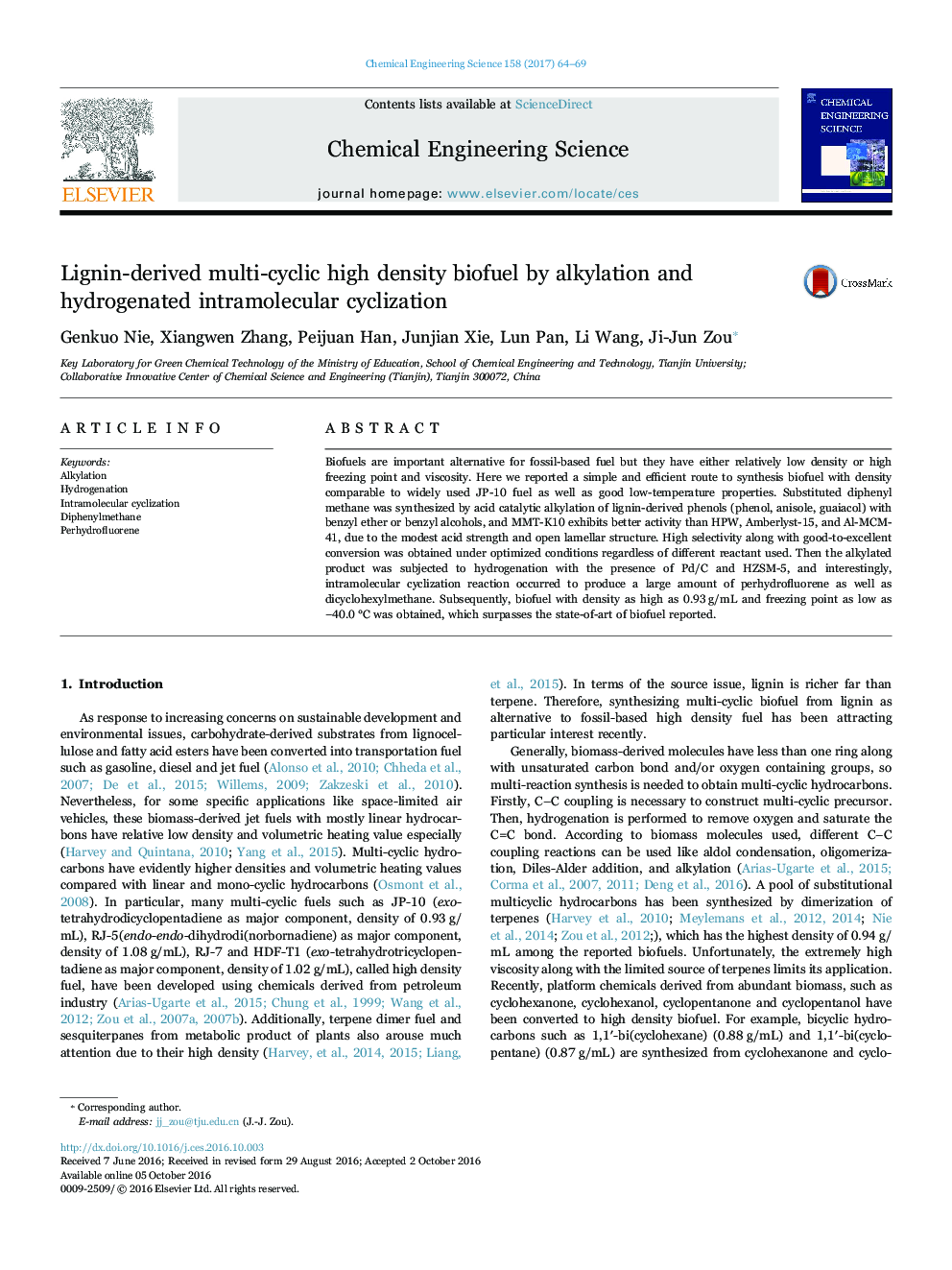| Article ID | Journal | Published Year | Pages | File Type |
|---|---|---|---|---|
| 6467917 | Chemical Engineering Science | 2017 | 6 Pages |
â¢High-density biofuel is synthesized from lignin-derived phenols.â¢Biofuel has higher density and lower freezing point compared with literature.â¢MMT-K10 selectively catalyzes alkylation of phenols with benzyl ether.â¢Perhydrofluorene is formed by hydrogenated intramolecular cyclization.
Biofuels are important alternative for fossil-based fuel but they have either relatively low density or high freezing point and viscosity. Here we reported a simple and efficient route to synthesis biofuel with density comparable to widely used JP-10 fuel as well as good low-temperature properties. Substituted diphenyl methane was synthesized by acid catalytic alkylation of lignin-derived phenols (phenol, anisole, guaiacol) with benzyl ether or benzyl alcohols, and MMT-K10 exhibits better activity than HPW, Amberlyst-15, and Al-MCM-41, due to the modest acid strength and open lamellar structure. High selectivity along with good-to-excellent conversion was obtained under optimized conditions regardless of different reactant used. Then the alkylated product was subjected to hydrogenation with the presence of Pd/C and HZSM-5, and interestingly, intramolecular cyclization reaction occurred to produce a large amount of perhydrofluorene as well as dicyclohexylmethane. Subsequently, biofuel with density as high as 0.93 g/mL and freezing point as low as â40.0 °C was obtained, which surpasses the state-of-art of biofuel reported.
Graphical abstractDownload high-res image (231KB)Download full-size image
